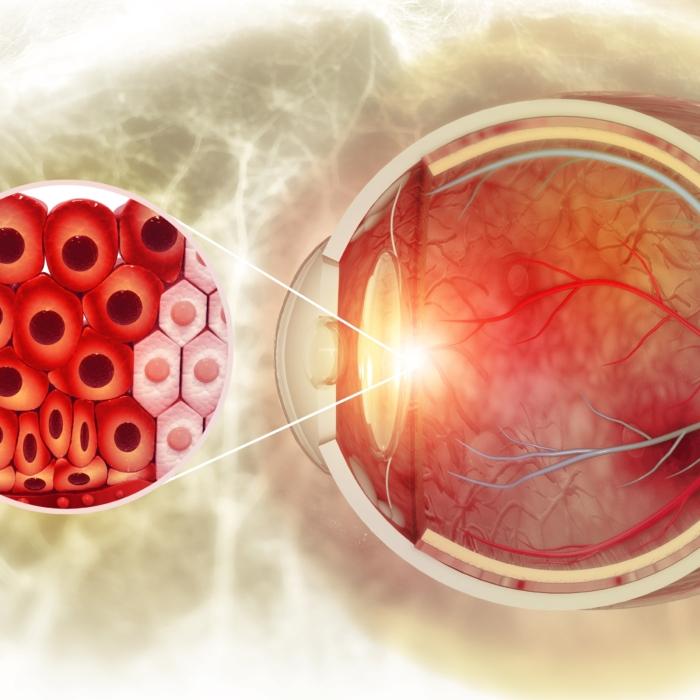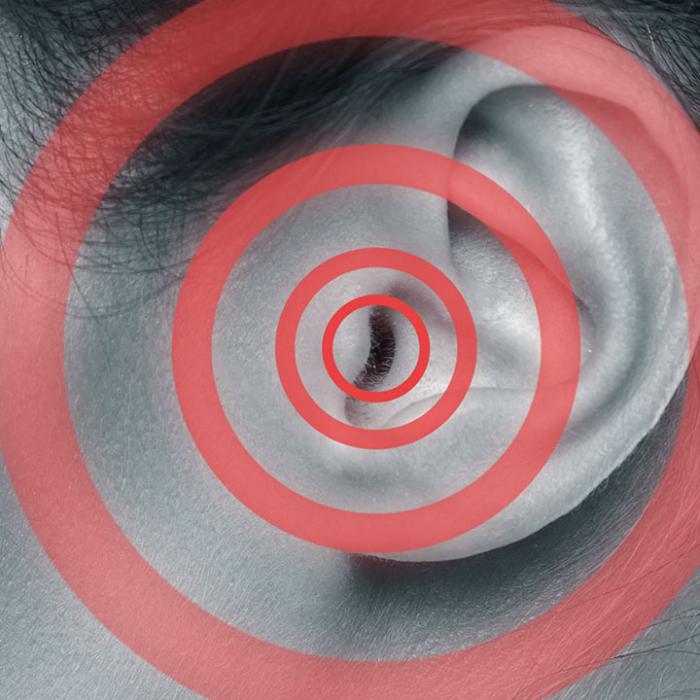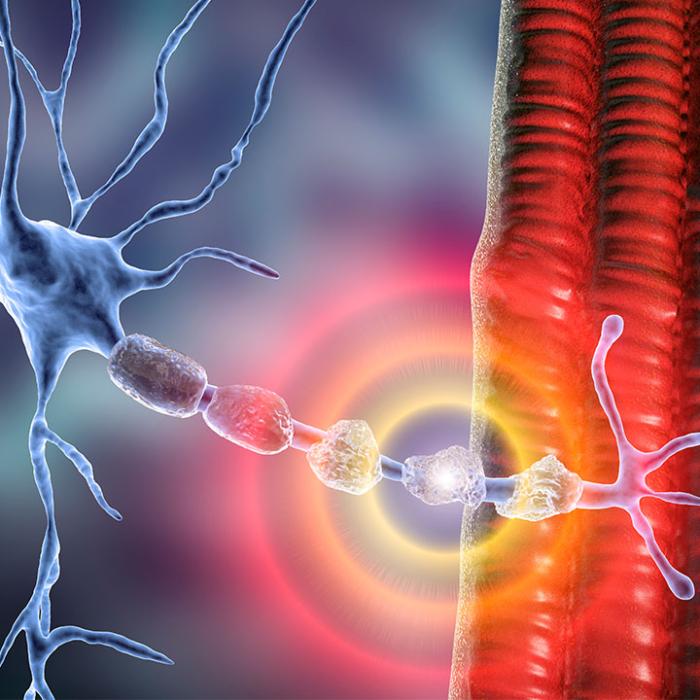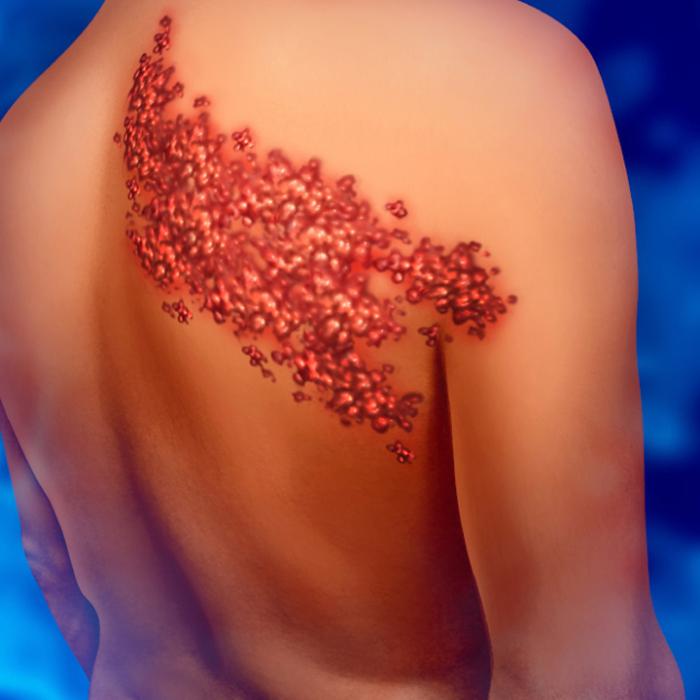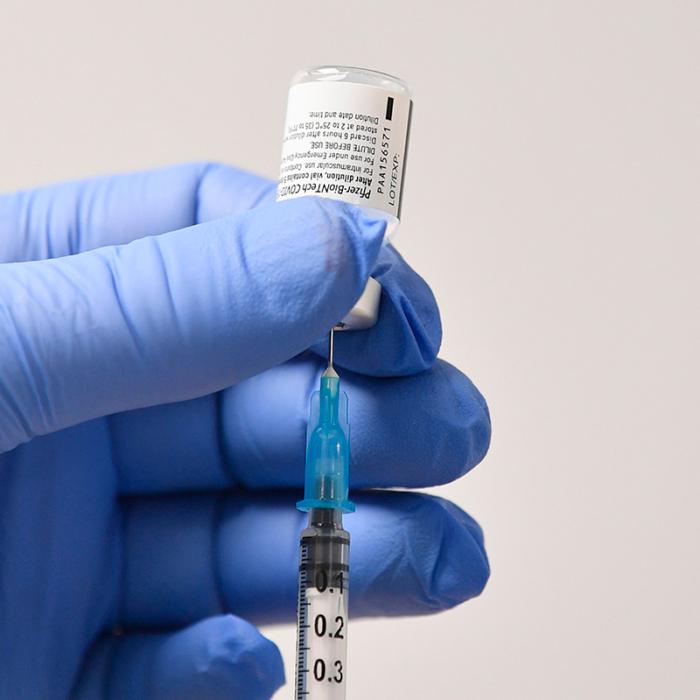New Hampshire state Rep. Mike Belcher has been suffering from ocular migraines for almost two years. He took his first Pfizer COVID-19 mRNA immunization in April 2021, and things haven’t been the same since.
About 12 hours after the shot, Belcher recalled developing symptoms of severe flu. Neurological symptoms manifested in a matter of days.
One unusual symptom stood out: His vision became strange. He started to notice that the red and green color balance in his eyes would shift, and dark spots would appear in his field of vision.
Belcher would soon be tormented with painful headaches preceded by a blinding light that would cause searing pain at the back of his eyes.
He also experienced more serious symptoms, including impaired balance (he was unable to walk in a straight line) and memory problems.
“I was hospitalized for maybe four days, and I was discharged with the diagnosis of protracted ocular migraines with some other names stacked on,” Belcher told The Epoch Times. “I had never had a migraine before, and at that point, I had a migraine for [about] 20-something days straight.”

Reports of Unusual Visual and Neurological Symptoms in the Vaccinated
Alabama-based neurologist and neuroradiologist Dr. Diane Counce told The Epoch Times that since the vaccine rollouts, she has also seen many patients who, after vaccination, would develop migraines or experience a worsening or increased frequency of symptoms. These migraines would often manifest with temporary blindness.Counce’s clinic has treated roughly 300 long-haul and post-vaccine patients, and she has noticed that her long-COVID patients tend to have symptom presentations that are more understood, “more textbook presentation,” while the patients who developed symptoms after vaccination may develop more severe and unexplainable symptoms.
A rather puzzling symptom she saw in her vaccinated patients was vision fluctuation, which would be accompanied by other neurological problems. The patients’ visual acuity would decline, but the decline would fluctuate from day to day, with no obvious physical abnormality observed in the eye.
The constant changes in symptom severity make it hard for patients to change their eyeglass prescription, “because they'll be different the next day,” Counce said.
Ophthalmologist Dr. Lynnell Lowry from Alamo Eye Institute in Texas has also observed a rise in unusual eye problems.
She told The Epoch Times about a patient who, for several weeks, had her field of vision interrupted by snow-like disturbances, but Lowry couldn’t find anything remarkable upon examination.
Most of Lowry’s vaccinated patients seemed to have developed vision problems related to a shingles flare-up or thyroid-related deficiencies.
Eye Complications Recorded in Database and Literature
According to data from the U.S. Centers for Disease Control and Prevention’s (CDC) Vaccine Adverse Event Reporting System (VAERS), about 70 percent of eye pain, blurry vision, and visual impairment reports were filed for COVID-19 vaccines, as well as more than 50 percent of all eye swelling reports.While VAERS can’t determine whether an adverse event was caused by a vaccination, patterns in reporting may suggest a need for further evaluation to assess potential safety concerns.
The baseline rate of uveitis flare was 12.3 per thousand patient months. This number increased to 20.7 after the first dose, 15 after the second dose, 12.8 after the third dose, and 23.9 after the fourth dose.
- Ocular inflammatory diseases occur when tissues in the eye become red, swollen, and pained. Post-vaccination inflammation has been documented in the conjunctiva, the outermost layer of the eye, and the sclera, the white layer covering the eye, as well as inflammation in the inner layers including the episclera and uvea.
- Optic neuropathies occur when the optic nerves that transfer visual information from the eye to the brain become damaged. This may occur when blood clots stop or limit blood flow to the nerves and also when the body starts attacking its own optic nerves, which may lead to flickering lights in the eyes, vision loss, and pain.
- Anterior segment conditions are related to eye complications in the front part of the eye such as the cornea, irises, and lens, as well as the muscles that control these areas. Since the vaccines rolled out, there have been several reports of keratitis, which is inflammation in the cornea. Reports of corneal transplant rejections have also been documented, although reporting rates aren’t higher than rates of other vaccines. Eye infections from shingles have also been reported and may occur with or without rashes.
- Retinal conditions include tearing and detachment of the retina. Since the retina is responsible for detecting light and color, its damage can lead to impairment and loss of vision.
More Evidence Needed to Prove Causality
Since COVID-19, doctors have become more cautious when discussing vaccine adverse events.Mark said his ophthalmologist told him that the spike protein produced by his first dose of the COVID-19 vaccine may have aggregated in his eye, leading to inflammation and damage, but other eye specialists have told him the opposite.
While ophthalmologists are now becoming more aware of vaccine adverse events, some argue that the current evidence that supports ocular complications from the vaccine isn’t strong enough.
Ophthalmologist Dr. Abdelrahman Elhusseiny, who has co-authored several studies documenting ocular adverse events after COVID-19 vaccinations, said although the literature on this topic has increased since 2021, he has seen very few cases of possible vaccine adverse events in his clinic.
He also said many of his vaccinated patients who then developed ocular problems had underlying health problems, such as autoimmune disease, diabetes, or high blood pressure, which would already put them at risk of ocular symptoms and may increase the risk of vaccine adverse events.
“There is evidence, but the evidence is not as strong as with other conditions such as, say, cardiovascular issues. This is mainly due to [the] small number of events and lack of well-controlled studies specifically on ocular adverse events,” ophthalmic epidemiologist and professor Mahyar Etminan from the University of British Columbia told The Epoch Times over email.
Nevertheless, Etminan believed that it’s possible to investigate the possible link between ocular complications and vaccinations, noting that the study should be well-designed with a large sample size.
“Since these vaccines are under the microscope, we have to be careful not to link everything and the kitchen sink associated with these drugs. This data should only come from well-designed studies,” he said.
Ophthalmologists Now Discussing Vaccine Risks With Patients
To err on the side of caution, some ophthalmologists are now actively bringing up possible risks of the vaccines to their patients.Lowry said that now she considers a person’s vaccine status and evaluates its potential temporal association with the symptoms of which her patients complain.
Elhusseiny similarly said he lets his patients know about the risks of vaccinating so they can make their own decisions.
One of Elhusseiny’s patients lost his spouse to COVID-19 and continued getting vaccinated without further adverse reactions, while another patient had a relative who experienced a vaccine-adverse event, and therefore, decided to stop getting vaccinated.
Lowry highlighted the importance of physicians bringing up vaccine risks with their patients.
Coming out of the COVID-19 pandemic, she noticed that while some patients suspect that the vaccines may have been involved in some of their symptoms, they seem afraid to mention it voluntarily.
“There’s a huge stigma,” Lowry said. Patients who got vaccinated and had adverse events are “almost afraid to blame it on the vaccine.”
Unresolved but Improving
When looking to the horizon, the bright light triggers a pulsating effect on his eyes, Belcher said.“The vision kind of fades in and out just a little bit,” he said. “That’s a constant feature.”
Belcher said many of the doctors he saw during and leading up to his hospitalization were quite certain that the vaccine was a contributor to his condition.
Thankfully for Belcher, most of his neurological symptoms are now under control.
Although his ocular migraines need daily medication to prevent breakthrough cases, in recent weeks, he’s seeing a decrease in frequency.
Belcher hopes that future examinations will inform him of the pathological reasons behind his ocular symptoms.




